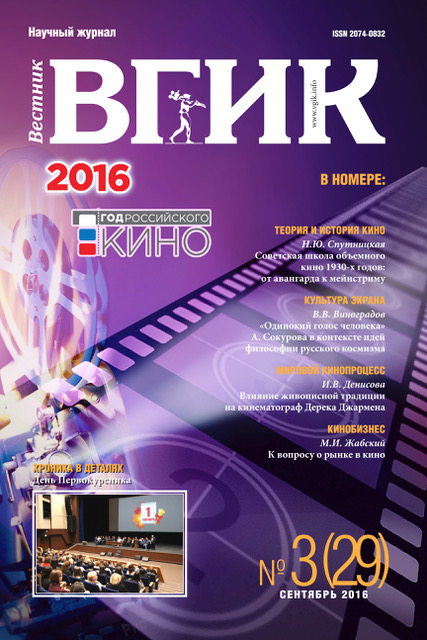Specifics of Imaginative Approach in the US Documentary of 1960-2000s
- Authors: Kazyutchits M.F1
-
Affiliations:
- ВГИК
- Issue: Vol 8, No 3 (2016)
- Pages: 95-105
- Section: WORLD CINEMA | ANALYSIS
- URL: https://journals.eco-vector.com/2074-0832/article/view/14715
- DOI: https://doi.org/10.17816/VGIK8395-105
- ID: 14715
Cite item
Full Text
Abstract
The subject of this article is a survey of artistic techniques of the American documentary filmmaker F. Waisman. The object is the US documentary of the 1960-2000s. The author attempts to distinguish the specifics of the Waisman’s imaginative approach, exploring the director’s work as a developed part of so-called observation method characteristic of the films by American documentary filmmakers R. Drew and R. Leacock (the founders of the “direct cinema”). The author shows that minimalism of expressive means, the frequent use of camera travellings, raw-like cutting in the movies Titicut Follies (1967), Hospital (1970), Near death (1989) greatly complicate the understanding of the Waisman’s concept. Ambiguity of imagery in these pictures inevitably leads to a richness of connotations and surplus symbolism. High school (1968) clearly demonstrates a deep fracture of the American society in the late 60's, fully reflected in the school system. Wiseman explores the nature of executive and judicial power of the US in Law and order (1969) and The juvenile court" (1973). He tries to show the crisis of classical art within mass culture in the films National gallery (2014) and Crazy Horse (2011). Waisman’s approach allows to avoid the commonplace discourse (and the decline in the artistic level of the film) in coverage of such phenomena as the executive and the judicial power, education, arts and entertainment industry. The director was able to combine the complex and polysemantic visual design with the unique composition of the stuff (through cutting and camera work). All this helped him to unite the imaginative merits of a documentary film with narrative symbolism and traditions of poetic cinema.
Keywords
About the authors
Maksim F Kazyutchits
ВГИК
Author for correspondence.
Email: editor@vestnik-vgik.com
PhD (Philosophy), senior researcher, Department of Modern Screen Art, Institute of Film Art, VGIK.
References
- Правда кино и «киноправда» / под ред. С.В. Дробашенко. М.: Искусство, 1967
- Бодрийяр Ж. Символический обмен и смерть. - М.: Добросвет, Издательство «КДУ», 2006. - 389 с.
- Правда кино и «киноправда» / под ред. С.В. Дробашенко. - М.: Искусство, 1967. - 332 с.
- Спутницкая Н.Ю. Экранизируя Зурбаган: к опыту использования анимации в российском игровом кино // Вестник ВГИК, 2015, № 4. - С. 73-83.
- Benson Th., Anderson C. Reality fictions. - S. I.: SIU Press, 1989. - 404 p.
- Levin G. R. documentary explorations. - N. Y.: Garden city, 1971. - 420p.
- O'Connell P.J. Robert Drew and the development of cinema verite in America. - S. I.: SIU Press, 2010. - 304 p.
- Erickson S. Director Frederick Wiseman on Burlesque Doc Crazy Horse // StudioDaily. URL: http://www.studiodaily. com/2012/01/director-frederick-wiseman-on-burlesque-doc-crazy-horse/ (дата обращения: 04.05.2016)
Supplementary files








